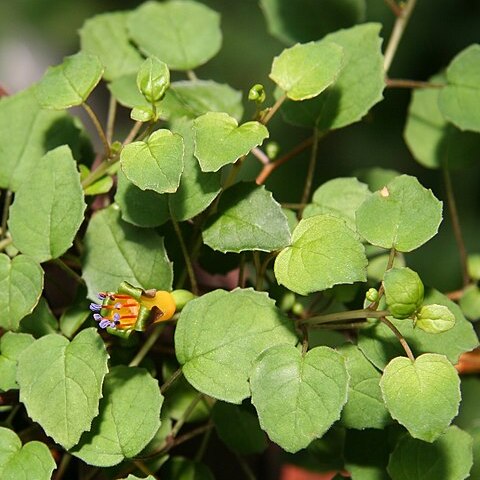Trioecious prostrate shrub, sts slightly scandent in presence of low support, or pend. over banks. Stems very slender, up to 5 dm. or more long; branchlets very slender. Lvs on subfiliform petioles up to 15-(30) mm. long; stipules minute, ovate. Lamina membr., 6-12-(15) × 7-10-(12) mm., suborbicular to broad-ovate, subcordate; margins sinuate to subserrulate, ± pubescent, as are main veins. Fls erect ± 12-20 mm. long, on peduncles up to 12 mm. long. Hypanthium dark red to purple, tubular-campanulate, glab., 7-8 mm. long. Sepals sharply reflexed, purplish at tips, narrow-lanceolate, ± 6 mm. long; petals 0; staminal filaments slender; receptive stigmas ± 2 mm. diam. Berry ovoid-oblong to obovoid, ± 20 mm. in longest diam., bright red to magenta.
A deciduous or evergreen trailing plant. It may spread 1 m wide. It is mostly only 15 cm high. The leaves are small and heart shaped. The flowers are erect. They are small. They have green to pale orange tubes. There are green to purple tipped sepals and no petals. The fruit are plum like and red.

